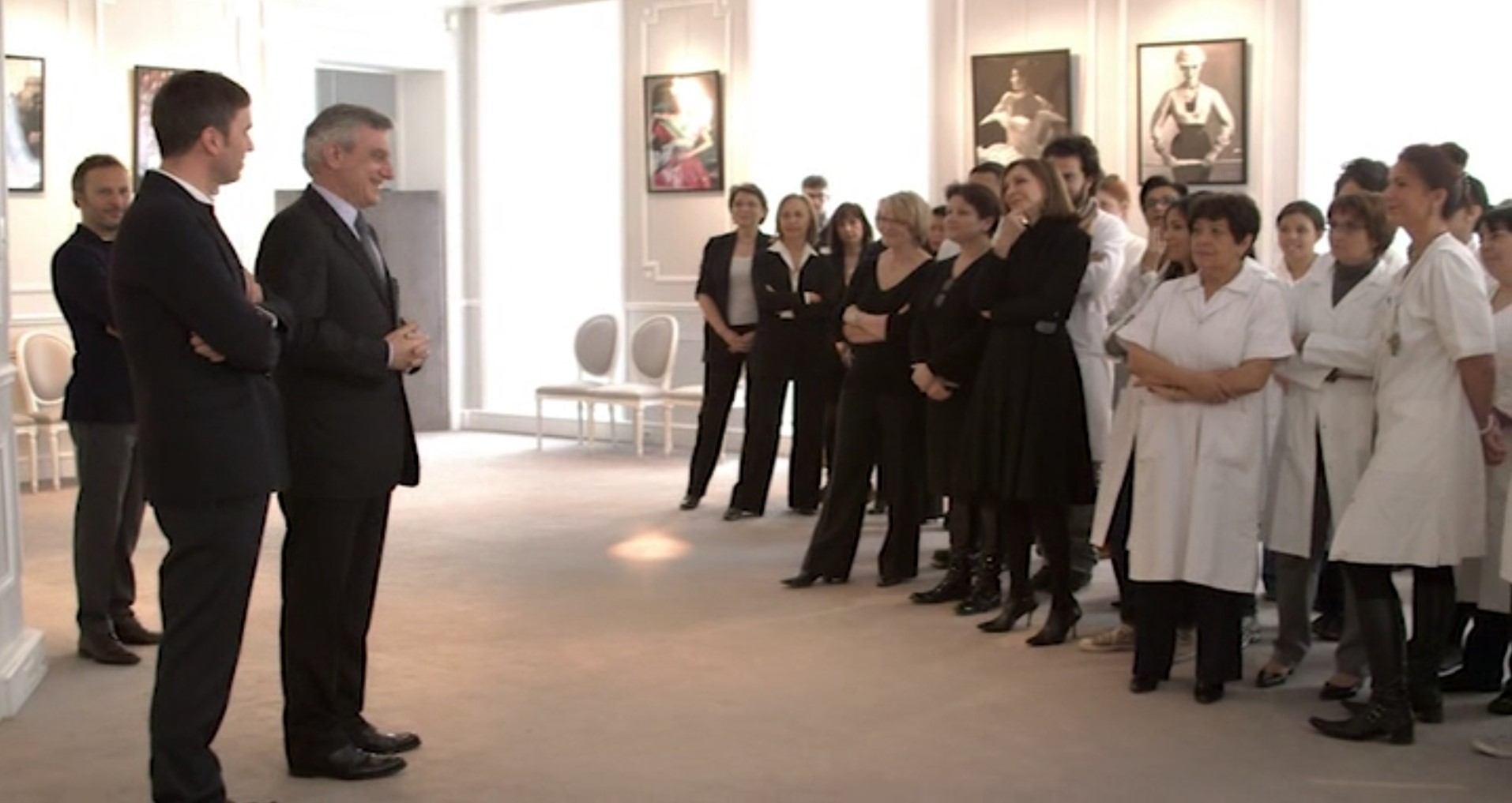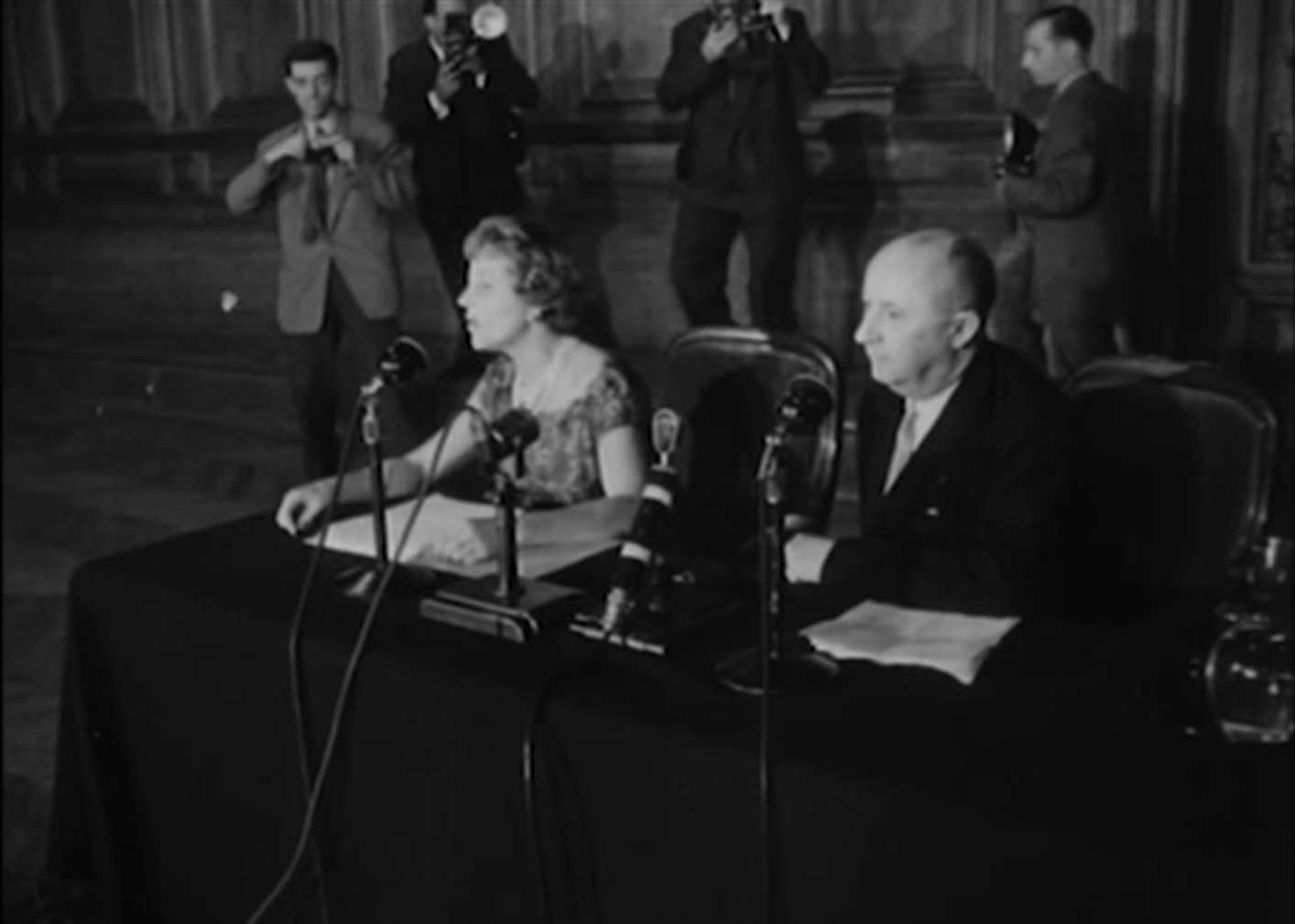This article is an analysis of the documentary Dior and I, which is an in-depth exploration of how Raf Simons reconciled and innovated his minimalist philosophy while respecting the traditions of the House of Dior.
As far as I’m concerned, and as far as I know, a documentary is a factual, informative film. However, since a documentary has a director and cannot show a vast amount of material as it is, it must be edited, and the filmmaker must intentionally direct the filming to make it more effective, so I think a better definition would be “visual information based on facts that is produced for good communication.” As such, documentaries use various cinematic techniques not only to convey information but also to provide an emotional and aesthetic experience to the audience. Perhaps it was an interesting documentary for people with the common denominator of ‘Dior’ and ‘FASHION’. Above all, ‘Dior and I’ is a very stylish and clean documentary.
More than just a fashion documentary, Dior and I is an in-depth exploration of the fusion of creativity and tradition. It details the challenges that come with launching a new fashion design and how they are overcome. In particular, it is a detailed look at how Raf Simons reconciles his minimalist philosophy with the traditions of the House of Dior.
Dior and I is a documentary about Raf Simons’ first collection project as head designer at Dior in 2012, after having been head designer at Jil Sander, a house synonymous with minimalist fashion. Minimalism is an aesthetic principle that is based on the idea of achieving maximum impact with minimal design. Minimalism was all the rage in the ’90s, but after a brief lull, it is said to have gotten stronger with the arrival of Jil Sander in 2013. The fact that Jil Sander’s chief designer was Raf Simons, and that Raf Simons is synonymous with the women’s new look, is shown in the fact that Dior is about to make its debut on the catwalk through haute couture. Haute couture means “fine tailoring” in French, and it is customized clothing that is made for a small number of customers and tailored to their needs, rather than mass-produced. Because artistry is so important, I was very interested to see how Raf Simons’ minimalist style would fit in, and what would be created.

In the process, the history of the House of Dior and Raf Simons’ personal background are analyzed in depth. In particular, Simons’s efforts to take Dior in a new direction while still respecting its traditions are highlighted, reminding us of the importance of balancing innovation and tradition in the fashion industry. The artistry and scarcity of haute couture, and the efforts of designers and craftsmen to maintain it, are at the heart of this documentary.
Dior and I is narrated in the first person by Christian Dior, the founder of Dior, and intercut with footage from the movie. There are a total of six screens, so we can divide the movie into six acts. They provide background and explanations for the events that are about to take place. In the first act, 55 years after the fact, in 2012, Raf Simons is welcomed as the new head designer of Dior. The film shows the delicacy and rigor with which the heads of each atelier inspect the outfits of their employees before they meet Raf, emphasizing Dior’s tradition and creating a stylistic confrontation with Raf. In addition, in the third act, the film switches from the present to the past through matching cuts to show archival photographs, and Christian Dior’s photographic commentary is added.

This cross-editing technique does more than just show the contrast between the two characters, it also visually conveys the timelessness and changeability of the brand. This is one of the great strengths of the documentary, as it allows the viewer to see how the styles of Christian Dior and Raf Simons blend together to keep the House of Dior’s reputation alive.
Dior is told from the perspective of a third-person observer and intercut with interviews as new characters are introduced, conflicts arise, or events occur. This third-person and interview format lends a sense of objectivity. Also, at the end of the movie, the characters of all the employees of the House of Dior remain in our minds. This is possible because the film is not centered on one person, Raf Simons, but on all the employees of the House of Dior. I think this gives the audience a better understanding of the House of Dior, it gives it objectivity, and most importantly, it humanizes it and makes the documentary really interesting.
What’s important to note here is the relationship between the people in the documentary. The interactions between designers and artisans go beyond a working relationship and show the essence of collaboration to maintain and develop the Dior brand. The challenges that Raf Simons faces as the head designer of the House of Dior and the bonds he forms with the craftsmen along the way are another fascinating aspect of the documentary. This bond emphasizes the importance of mutual trust and respect, not only in design, but also in the production process, which is the very nature of fashion.

As mentioned earlier, Dior is divided into six acts, narrated by a monologue by Christian Dior. It is not an artistic documentary that is difficult to understand, nor is it a metaphorical documentary. I think cinema is an art of empathy, and this is the best way to describe it. To summarize, the story begins with the arrival of Raf Simons, who spends eight weeks preparing his collection. But while Raf Simons may be at the forefront of the minimalist market, haute couture is a prestigious and traditional market. Former Dior chiefs and seamstresses describe Raf as a “ready-to-wear” designer. Ready-to-wear refers to clothes that are pre-made and sold according to certain standard measurements. Think of the clothes you see in the department stores around you. However, haute couture is made for one person. Two employees, including the head, travel to the customer for fittings or complaints. Raf is frustrated that the absence of the head of the house leads to delays, but he says it’s justified because a single customer is an ongoing spend of more than $400 million a year for haute couture.
Despite the twists and turns of “Dior” and “Raf Simons,” Raf travels to places like the Pompidou Center for artistic inspiration and chooses an old French mansion as the location for his collection, which is based on Jeff Koons’ “flower puppy” concept. The idea is to put flowers all over the interior walls of the building to create the feeling of being in a garden and to enchant with the scent. This choice transforms the catwalk into more than just a space to showcase the clothes, but a sensory experience that captures the essence of the Dior brand. It’s an example of how meticulous Raf Simons was about realizing his aesthetic vision. Even the day before the show, he worked on the outfits to ensure the success of the collection. At the finale, Raf is congratulated and overcome with emotion. After all of the conflict and hard work that preceded it, the audience is left with a more emotional ending because of the humanizing appeal of seeing a creative director synonymous with minimalism, Raf Simons, shed a tear.
If we talk about the contrasts and conflicts shown in Dior, it’s actually a very childish conflict. The differences of opinion and lack of communication were very dramatic and mundane, but the childishness of the conflict was what made it relatable and emotional. If the story had been about a realistic, professional conflict in their own world, it would have felt alien and harder to relate to. Also, the global brand ‘Dior’, especially the haute couture house of Dior, is an unfamiliar and very prestigious symbol of luxury. The general audience would have been limited to text or photos. To be able to see Dior’s haute couture through a video and the process of the Raf Simons collection is a valuable documentary in itself.
When we think of the House of Dior, the first image that comes to mind is of a dignified gentleman sewing in a sophisticated space. But the House of Dior is filled with fabric and mannequins, and 60-something mothers in white gowns are sewing. I expect elaborate techniques, but instead, they cut the skirts of the fitting models with embarrassingly simple scissors. “I eat candy every day, just as the patrons often drink alcohol,” she says over a Haribo jelly, breaking down the barrier between the House of Dior and me. I expected a very authoritarian look, but the opposite is true: these are haute couture seamstresses with 45 years of experience. They are happy to work, apologize for mistakes, and applaud a good result. At Raf’s finale, they all clap for him. Raf’s tears of gratitude and emotion make them all cry. It was a natural reaction, but I felt the difference between them and myself, and I also felt a sense of admiration.
To summarize my assessment, Dior and I is a film that not only elevates Christian Dior’s reputation, but also shows the identification of Raf Simons with Christian Dior. The suggestion of addressing Raf Simons as monsieur in front of his name and the cross-cutting of Raf’s collections with Christian Dior’s management strategies and know-how reiterate the Dior brand values. Monsieur is the direct translation of the French title my lord, and the intercutting of Christian Dior’s collection preparation 55 years ago with Raf Simons’ shows the integration of Raf Simons into Dior. “I think of myself as a child of Dior, 22 years ago, and now I express what’s in me to some extent,” he says, and the Dior advertising video at the end of the collection, ‘My Dior is my dior, My Dior is my…’ is a reminder of Dior’s philosophy and direction. These attachments add indirect explanations to the mix of Raf Simons and Dior, making it more understandable and interesting.
The documentary is realistic in that it is based on real-life situations. The actions of the characters, the chairs they sit in, and the conversations between them are all believable. The shots of the Montaigne family home in Paris, the Pompidou Center, Europe’s premier contemporary art museum, the Eiffel Tower, and the stunningly proportioned mansions that appear throughout the film are all realistic and give the viewer a sense of being there. The documentary’s unique qualities make it more than just informative; it immerses the viewer in the scene as if they were there. This is especially important in fashion documentaries, as fashion is more than just a visual experience; it is a multidisciplinary art that reflects a culture and an era. Dior and I capitalizes on this aspect of fashion, immersing the viewer in the world of the House of Dior.
The fact that it is realistic is a flavor of documentaries, unlike dramatic films. This can be boring, or it can be its charm. Dior and I follows a predictable narrative. It could have been titled “Dior’s new designer, Raf Simons, completes a collection with a twist,” and some might say it’s too much of an official Dior promotional video. The conflicts along the way are routine and easily resolved rather than realistic. However, the weight of the brand, the humanity of the story, the topicality of Raf Simons, the stylish music and editing, and the spectacular fashion show at the end make the documentary worthwhile.